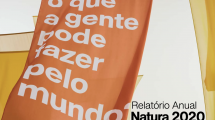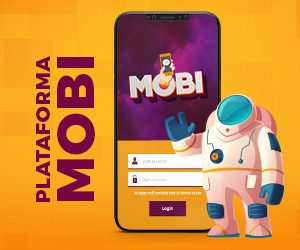QR codes (quick response) have been around for some time.
As far as I could find out (Wikipedia bound, I’ll admit to that), they were created by Denso-Wave, back in ’94, a Toshiba subsidiary, and were used to track down vehicles and parts at the production line – very much like any warehouse uses with automatic inventory coded items. QR codes are made of black rectangle pattern, arranged into a larger even-sided square, applied over a white background for contrast. It looks like a badly-defined pixilated (pixilated? Go figure) image. For a pictorial language culture, it makes a lot of sense (keep in mind that Asians currently use a large amount of complex symbols in communications, such as Japanese kana and kanji).
The thing about QR is that it works rather well, even on an experimental basis, and that is quite good. They can, however, be tricky to deal with – marketing wise, and that is very bad. Finally – and there is no escaping it, they are damn ugly!
Notwithstanding, today we see them around in various situations: movie posters, real estate sigs, different promo PoS (point-of-sales) print materials, such as in supermarkets and what not. I even have it on my business cards, in an attempt to have my prospect clients input my contact info and website link in their mobile phones.
But do they really work? Or is it one of those “amateurish trends”, where everyone does it (more or less), and almost everyone does it poorly?
In order to evaluate its pros and cons, we need to understand its main characteristics:
Here’s my take on it.
From a technical perspective:
GOOD: it is way better than the basic 2-dimensional bar codes, as it allocates a lot more data, not to mention unique formats (a clear update). I’m not a tech guy, but specialists in LinkedIN can contribute with more interesting info on this matter.
BAD: it can be hard to scan (yes, you need to do that) if the definition is less than perfect. I’ve tested it on print media and found out that glossy surfaces reflect most optical lens and create a “blurr effect”. Again, I invite those more tech savvy then myself (a lot of those guys around) to add to this point. I’ve tested
UGLY: it’s so ugly it hurts my retinas. And my mobile lenses’ sensibility, I’m sure.
From a marketing perspective:
GOOD: QR codes are easy to generate, there are several online tools that will do that for free. They can be used in virtually all medias, be that print, digital or you-name-it (I’ve seen it chiseled on stone, printed on degradable material such as paper napkins , and – if their elderly cousin – the bar code, are to be taken as references, they will soon be found inked on people’s skins). It is one its way to become as popular as it will ever be.
BAD: they can be horrible inefficient. It requires a nifty strategy in order to promote real value. The coded content must be mobile-optimized, accessible to an ever-fragmented device platform base and, most of all, relevant. After all, potential users must first carry around a scanner-enabled mobile device, usually a smartphone with the proper app previously installed. That is a big “if”, and I don’t think it can be considered a given in most western markets. One more snag to consider in your marketing strategy: provide and promote optical scanners for a multitude of devices out there. No easy task . Even if your targeted audience has those available, the tech risk of failed scans is another thing to consider on the available results. I’m not going to go into more serious issues, such as KPIs that would be adequate for measuring conversions rates (although there are possibly lots of technically sound options available), content optimal formatting, and the most relevant of all: a clear, relevant LINK to your overall communications plan. Whatever the case, the reward for all that scanning trouble you will put your consumer through MUST bring value to the table.
UGLY: there is no disguising it in the ad you’ll use as a launch pad. A “sore thumb” concept barely describes the vibe it sends out. Your creative guy will hate you for that.
From a probable user perspective:
GOOD: it’s cool to have rich media content directly into their mobile device, on the go, per request (pull media). Take advantage of that seemingly untouched demand and boost your communication mix.
BAD: it can be quite a technical challenge. I’ve witnessed some fairly intelligent acquaintances trying to take a picture of the QR code, and then complain it does not work. Be ready for that.
UGLY: you’re likely to hear “what the %$*!# is that thing?” quite often. I know frequently I do, every time I show my business card around, although the expletive given varies in new and original ways, which is always entertaining.
This great example, a marketing case from South Korea, was recently referred to me and displays a fine QR code usage, demonstrating a proper planning and understanding of the consumer’s habits and expectations.
QR codes will be around for a while longer, depending on new and ingenious ways we use them. The better the approach, the bigger the adoption rate amongst consumers and the longer the lasting effects.
“Leia a versão atualizada deste artigo, em português ”.









Glad to visit this blog, keep it going.
Everything is very open and very clear explanation of issues. was truly information. Your website is very useful. Thanks for sharing.
I view something really interesting about your web site so I saved to my bookmarks .
You have some interesting info here, well written and your website is user-friendly.
It’s in fact very difficult in this active life to listen news on Television, thus I just
use the web for that purpose, and take the most up-to-date news.
Hi there colleagues, its wonderful article concerning tutoringand fully explained, keep it up all the time.